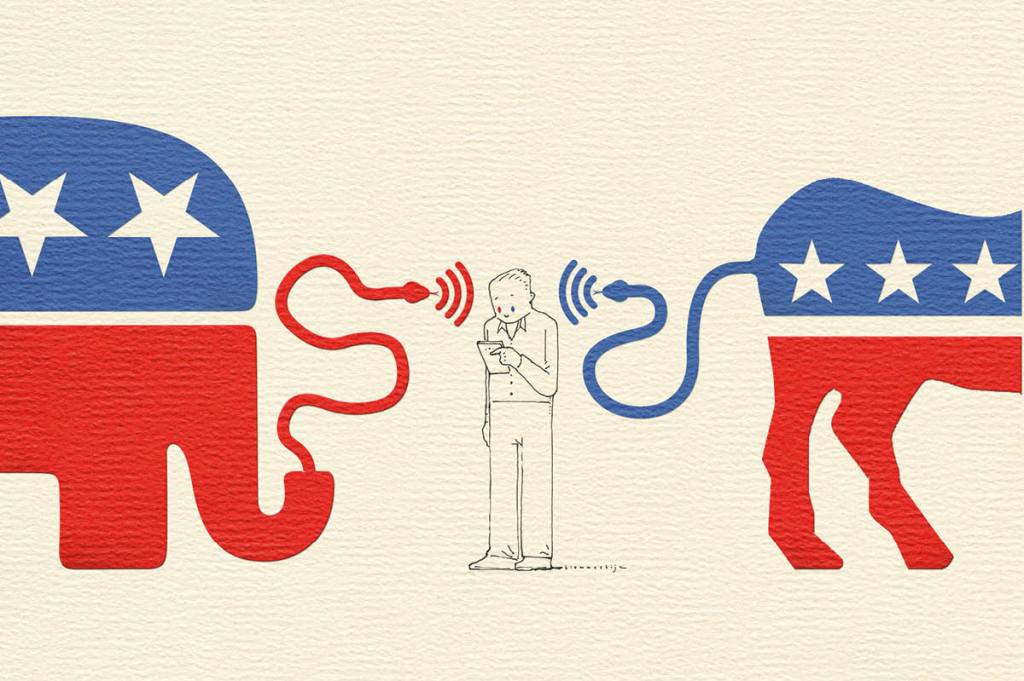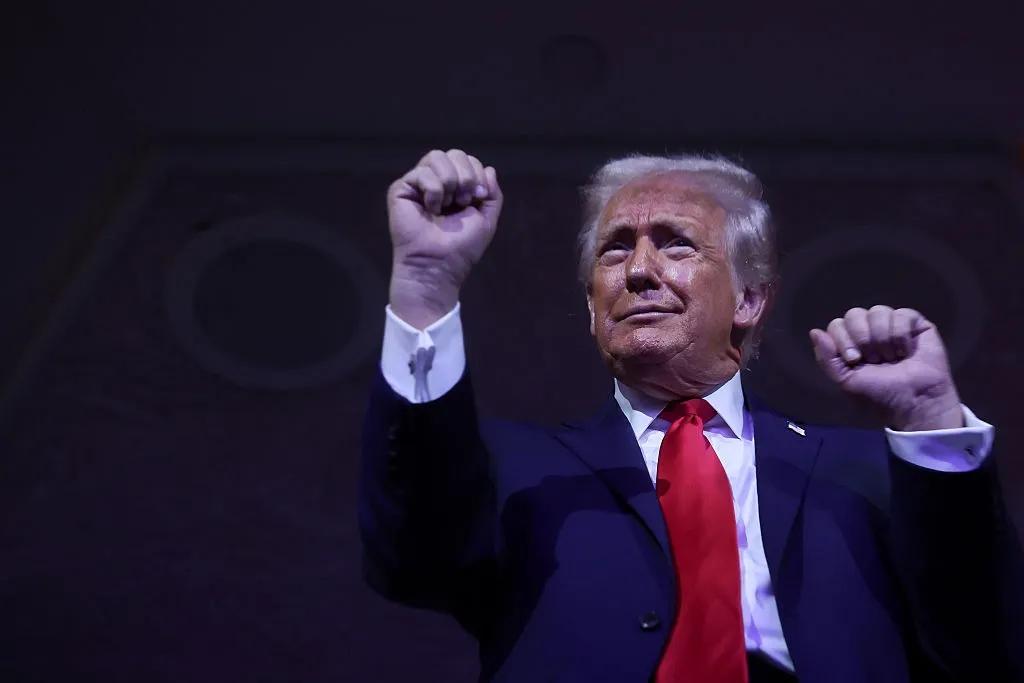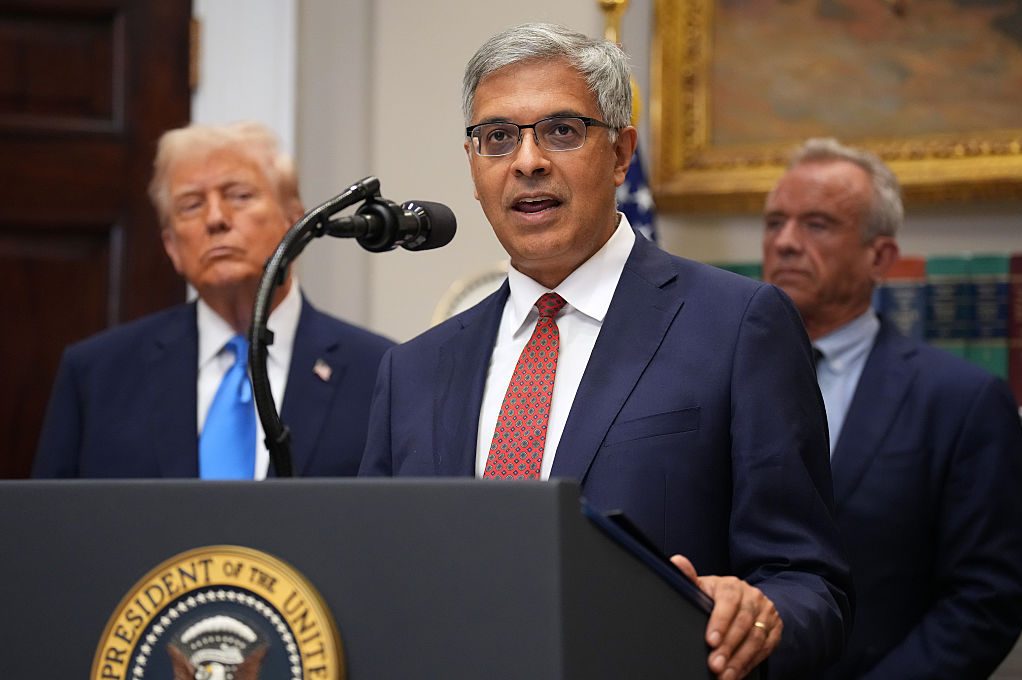Someone call the disinformation police! Left-wing conspiracy theories and attempts to manipulate the media are spiraling out of control ahead of the 2024 election. From tall tales about former president Donald Trump staging his own assassination attempt to the lower-stakes speculation that Republican vice presidential candidate J.D. Vance is wearing guyliner, “BlueAnon” has reemerged in a big way.
BlueAnon is a blanket term coined by some conservatives to describe liberal and left-wing conspiracy theories. It intentionally rhymes with QAnon, the arguably better-known right-wing conspiracy, and mostly arose in response to what many regard as the Russian collusion hoax, the idea that Trump colluded with the Russian government to win the 2016 presidential election. Several stories stemming from the Russian collusion hoax were outlandish and unverified yet embraced by prominent members of the media and people in high-level positions within the national security state and the Democratic Party. The claims were also the subject of a special counsel investigation into President Trump.
Jonathan Chait, a political reporter for New York magazine, has said that claims of Russia blackmailing Trump with a so-called “pee tape” are “perfectly consistent with what we know about both parties.” Propelled by House Intelligence Committee chairman Adam Schiff’s claim to have evidence of collusion, and consistently false reporting from the media about Trump campaign contacts with Russia, left-wing figures like Rosie O’Donnell, Bette Midler, Spike Lee and the Krassenstein brothers pushed the hashtag #MuellerTime to insinuate that Special Counsel Robert Mueller’s investigation into Trump would lead to his imminent indictment and arrest.
Disinformation experts and media outlets have routinely placed the bulk of the blame for “misinformation” and “disinformation” online on right-wing sources. But they have mostly failed to acknowledge the breadth and impact of the Russian collusion hoax, plus other popular BlueAnon fake stories: that Supreme Court Justice Brett Kavanaugh was involved in a gang rape; that actor Jussie Smollett was attacked by two Trump supporters; that Trump failed to condemn white supremacists in Charlottesville in summer 2017; that Trump told people to inject bleach during the pandemic and other stories that were shared — or are still peddled to this day — at levels as high as the presidency. Most also ignore the stories and ideas that were deemed right-wing misinformation but ended up being correct: the Hunter Biden laptop story; that Covid-19 likely came from a laboratory leak; that there were undercover federal agents at the January 6 riot; or that President Joe Biden was suffering obvious cognitive decline. All were labeled conspiracy theories; all turned out to be true.
Yers after the term “BlueAnon” first popped up on social media, it’s clear that left-wing disinformation is as prolific as ever — and that it becomes more prominent whenever Trump or Republicans appear to be succeeding.
When Trump was the victim of an attempted assassination at a rally in Butler, Pennsylvania in July, social media immediately lit up with assertions that Trump had staged the shooting to boost his political prospects. Dmitri Mehlhorn, a political advisor to Democratic megadonor and LinkedIn chairman Reid Hoffman, emailed supporters that the shooting was “maybe even staged” and bemoaned that “NOT ONE NEWSPAPER OR OPINION LEADER IN AMERICA IS WILLING TO OPENLY CONSIDER THE POSSIBILITY THAT TRUMP AND PUTIN STAGED THIS ON PURPOSE.” According to the Guardian, some posts on X suggesting that the shooting had been a hoax received millions of views and tens of thousands of likes. On MSNBC, former Republican National Committee chairman Michael Steele cited “reports” that Trump’s ear was actually hit by shattered glass from a teleprompter as opposed to a bullet (the FBI has since confirmed that Trump was shot). Others questioned if he was hit by anything at all; Brian Krassenstein implied in a post on X that it was suspicious how quickly Trump’s ear had healed and some users with hundreds of thousands of followers sarcastically said that the ear had “magically healed” next to zoomed-in photos of the small scar at the top of Trump’s ear cartilage. As of mid-July, one-third of likely Democratic voters believe that the Trump shooting was staged, according to a Morning Consult poll.
Trump’s running mate has also been the subject of nasty disinformation spread by political opponents and online memesters. In mid-July, an anonymous X account falsely claimed that Ohio senator J.D. Vance wrote in his book Hillbilly Elegy that he had had sex with a couch. “can’t say for sure but he might be the first vp pick to have admitted in a ny times bestseller to fucking an Inside-out latex glove shoved between two couch cushions (vance, hillbilly elegy, pp. 179-181),” the tweet claimed before quickly going viral. The supposed memoir passage doesn’t exist, but plenty of people fell for the tweet, not realizing — or not caring — that it was meant to be a joke. “The rumors were easy to believe, especially when the potential VP has such terrible ideas about sex,” wrote Vox’s Rebecca Jennings. Massachusetts senator Elizabeth Warren and Kamala Harris’s running mate Tim Walz both got in on the action by making couch jokes in public appearances. The Associated Press added more fuel to the fire by publishing, then unpublishing, a fact-check determining that Vance did not have sex with a couch; AP later claimed the fact-check had not gone through their proper editing process.
Noah Rothman, a senior writer at National Review, suggested a pernicious motive for the AP’s deleted fact-check. “The AP published a ‘fact-check’ of utterly unknown nobodies who alleged that J.D. Vance fornicated a couch, not because anyone believed that but because it introduces that nonsense into the bloodstream. Today, it’s gone. So sleazy,” Rothman said on X.
Kamala’s Wins, the self-described “largest online community supporting… Harris,” with more than 600,000 followers, falsely claimed that Cincinnati Bengals quarterback Joe Burrow was on a mid-August “White Dudes for Harris” call. The post was picked up by several sports websites and had more than 3.5 million views before it was denied by the Bengals and deleted, according to a report by Fox News.
Renee DiResta, former research director at the Stanford Internet Observatory, acknowledges that “no one party has ever had a monopoly on rumors or misleading claims” but appears to downplay the impact of recent left-wing conspiracies because they had eventually been “fact-checked” by media outlets or were “jokes.”
“Most of them appear to have been fact-checked; searching for the claims just now returned coverage that conveyed the accurate facts, though the J.D. Vance situation is more of a meme at this point. People aren’t creating content about the couch situation because they believe it, they’re posting because they know it’s not true and are in on the joke. Whether or not platforms return these articles, put labels on their content or use something like community notes to highlight accurate information is a function of their policies,” DiResta told The Spectator.
DiResta’s contract at the Stanford Internet Observatory was not renewed and the project was rebranded after it reportedly colluded with the Department of Homeland Security through the Election Integrity Project to censor purported online misinformation. Independent journalist Matt Taibbi exposed how the SIO and EIP fielded government requests to flag social media content and then pushed them to social media platforms. A lot of this content was incorrectly branded false — the Covid lab leak theory and the Hunter Biden laptop story, to name a couple.
It’s been difficult to track down what’s behind some of this type of reporting. For example, Brandy Zadrozny, an NBC News reporter who covers internet extremism, admitted in her report on the assassination attempt conspiracy theories that “the word ‘staged’ became the second-highest trending topic [on X] immediately after ‘Trump.’” Zadrozny did not return The Spectator’s request for comment.
Neither did New York Times reporters Stuart Thompson and Tiffany Hsu, who write about the spread of false information online. Hsu shared a byline on a story about the Trump assassination attempt conspiracy theories that focused far more on right-wing claims that Biden had tried to kill Trump than left-wing assertions that the shooting was staged. “The idea that President Biden was behind the shooting of Mr. Trump was perhaps the most dominant conspiracy theory,” the report claimed without citing evidence.
Hsu and her co-authors rejected outright the idea that the Democrats’ charged rhetoric about Trump could have inspired the shooting. It also accused Republicans of making false statements when they said the Secret Service failed to protect the former president. “One strain [of conspiracy theories] focused on accusations that Mr. Biden’s team had rejected earlier requests to bolster Mr. Trump’s protective detail, which have been denied by a Secret Service spokesman,” the article said. But it was the Washington Post that first reported that “top officials repeatedly rejected requests from Trump’s security detail for more manpower and gear at events before [the] attempted assassination.”
A separate report co-authored by Thompson and Hsu identified a “volatile election” that is “intensifying conspiracy theories,” but neglected to mention any examples from left-wing actors.
David Harsanyi, a senior editor at the Federalist and author of the forthcoming The Rise of Blue Anon: How the Democrats Became a Party of Conspiracy Theorists, argues that left-wing conspiracy theories often receive institutional backing, which makes the average American more likely to believe they are true. That makes them “more dangerous,” he says.
“Over the past few years, especially during the Russia collusion hysteria, it became obvious to me that the American left was highly susceptible to paranoia and conspiracy theories. The big difference is that the left’s conspiracies are laundered through the media, endorsed by ‘experts,’ and spread by state actors to give them more legitimacy. That kind of paranoid ecosystem is a lot more dangerous than the right-wing nuts raving on YouTube.”
But some mainstream actors are still reluctant to admit that BlueAnon is a legitimate problem. “The primary parallel between ‘BlueAnon’ and QAnon is that they rhyme. Beyond that, it’s a stretch,” the Washington Post’s Philip Bump wrote in mid-July. The Google News results for “BlueAnon” are significantly shorter than results for “QAnon” — three pages com- pared to thirty.
Bump’s colleague at the Post, Taylor Lorenz, is one of the few to acknowledge that “experts say they are seeing a big uptick in the manufacture and spread of BlueAnon conspiracy theories” and that these theories have particularly taken root on Threads, the Meta-run alternative to X.
Harsanyi, though, says BlueAnon has always been around. It just didn’t have a neat nickname until 2021. “The left has been pushing wild conspiracies and paranoia for decades. I lay out that history,” Harsanyi says. “Are Democrats any more likely to accept the results of a presidential election? They haven’t done it in decades. After Trump won in 2016, they simply gave into their worst conspiratorial instincts. It’s a lot easier to convince people that their political opponents are crypto-Putin assets hell-bent on instituting The Handmaid’s Tale than it is to debate them.”
This article was originally published in The Spectator’s October 2024 World edition.


























Leave a Reply